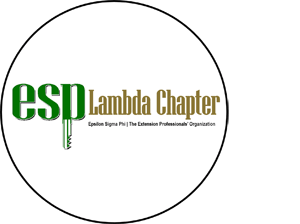Today in a program development staff session on recruiting participants, educators talked about the realities of our current landscape: changing rules/uncertainty about how we can work has disrupted a typical flow that staff may have once had for reaching out to individuals, program followers, and volunteers – causing a shift in the way that we do business. The discussion indicated a desire for more resources, collective tools for promotion, and methods for getting it done.
In the session we turned to our CCE larger system for some ideas: As a sample of what CCE staff are doing and sharing as success strategies, we searched last year’s success stories (available in full in a file from the staff site plans-and-reports page). I use this technique often to better understand the practices as well as successes of our Associations and area teams. Once the success story document is open you can search for keywords <ctrl + F> to find what you are looking for. We searched for the keyword: recruitment and noted several CCE Associations writing about working through partner organizations and key collaborators to recruit participants and target audiences successfully.
We also turned to each other, collecting ideas in a Qualtrics survey that we created together to document trends and suggestions about program recruitment. Responses indicated that our confidence with recruitment is at 59% (so additional resources could be helpful). Successful practices were noted to include:
- Recruiting through outside organizations + families/parents
- Hosting “food for thought events”, fun/creative events (food served) that can encourage participation
- Using surveys and social media polls as interactive outreach, inviting participation
- Using social media -including FB groups (promoting through other organizations)
- Encouraging personal connections (phone calls or e-mails or asking someone who knows a person to reach out), personally ask individuals, ask coworkers for suggestions, use university connections – might feel like it takes more time but success rate is likely higher
- Keeping a database of collaborators and interested participants so as to reach out to them easily next time!
While in our session we didn’t discuss looking at outside documentation, there are, of course, many good resources out there. A quick search after we met indicated that our questions and ideas are grounded! See below for a couple of links that could be useful:
- Journal of Extension search on the keyword “recruitment” brought this list: https://tigerprints.clemson.edu/do/search/?q=recruiting%20participants&start=0&context=21214874&facet=
- A google search to learn from others doing parallel educational work found this tip list from ExtendED Notes, an after school program support: https://www.extendednotes.com/after-school-articles/10-recruitment-strategies-that-will-boost-program-participation
Recruiting participants, particularly now, is not a problem unique to Extension. And while recruitment is not easy, a practice for approaching the problems at hand is helpful – set aside time, connect with others, clearly articulate messaging, document your ideas (so that you can reflect on your practice and learn from your trials), try things out… rinse, repeat. All that said – go get ’em and keep doing awesome work for our communities :)!

 well and your lives are beginning to return to a somewhat more normal existence. It’s been great to gradually get out to see friends and family that we haven’t seen in person in over a year and getting all of us ESP members and 5-H’ers together this summer is on my mind. We have reserved our usual pavilion at Myers Landing Park in Lansing for Tuesday, August 10 at noon. I’ll send more details as we get closer to the date, but for now, save the date! Looking forward to a good day with good friends. (Written by Tom Dumas, Lead 5-H’er and friend to ESP)
well and your lives are beginning to return to a somewhat more normal existence. It’s been great to gradually get out to see friends and family that we haven’t seen in person in over a year and getting all of us ESP members and 5-H’ers together this summer is on my mind. We have reserved our usual pavilion at Myers Landing Park in Lansing for Tuesday, August 10 at noon. I’ll send more details as we get closer to the date, but for now, save the date! Looking forward to a good day with good friends. (Written by Tom Dumas, Lead 5-H’er and friend to ESP)